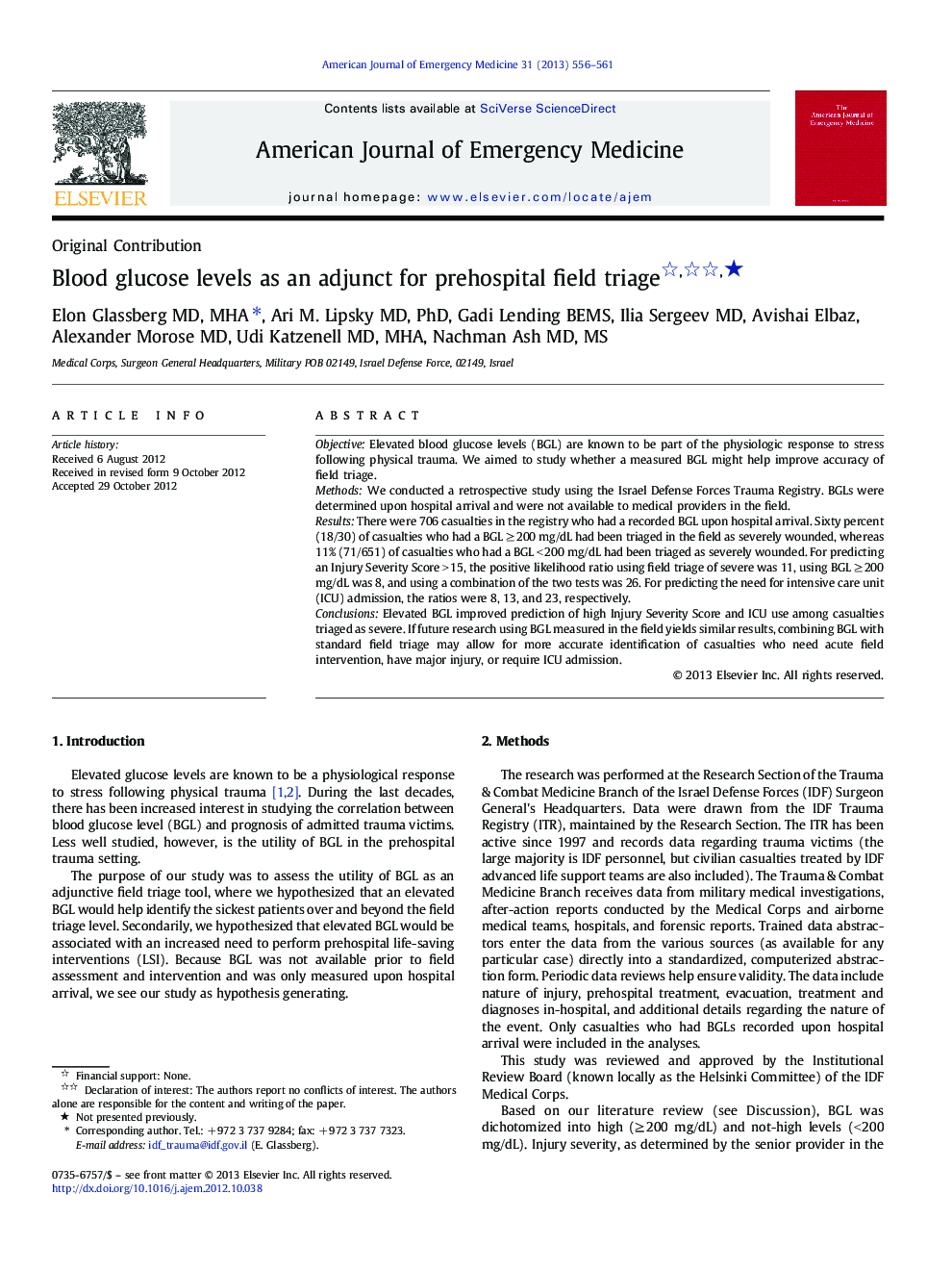| کد مقاله | کد نشریه | سال انتشار | مقاله انگلیسی | نسخه تمام متن |
|---|---|---|---|---|
| 3223830 | 1588132 | 2013 | 6 صفحه PDF | دانلود رایگان |

ObjectiveElevated blood glucose levels (BGL) are known to be part of the physiologic response to stress following physical trauma. We aimed to study whether a measured BGL might help improve accuracy of field triage.MethodsWe conducted a retrospective study using the Israel Defense Forces Trauma Registry. BGLs were determined upon hospital arrival and were not available to medical providers in the field.ResultsThere were 706 casualties in the registry who had a recorded BGL upon hospital arrival. Sixty percent (18/30) of casualties who had a BGL ≥ 200 mg/dL had been triaged in the field as severely wounded, whereas 11% (71/651) of casualties who had a BGL < 200 mg/dL had been triaged as severely wounded. For predicting an Injury Severity Score > 15, the positive likelihood ratio using field triage of severe was 11, using BGL ≥ 200 mg/dL was 8, and using a combination of the two tests was 26. For predicting the need for intensive care unit (ICU) admission, the ratios were 8, 13, and 23, respectively.ConclusionsElevated BGL improved prediction of high Injury Severity Score and ICU use among casualties triaged as severe. If future research using BGL measured in the field yields similar results, combining BGL with standard field triage may allow for more accurate identification of casualties who need acute field intervention, have major injury, or require ICU admission.
Journal: The American Journal of Emergency Medicine - Volume 31, Issue 3, March 2013, Pages 556–561